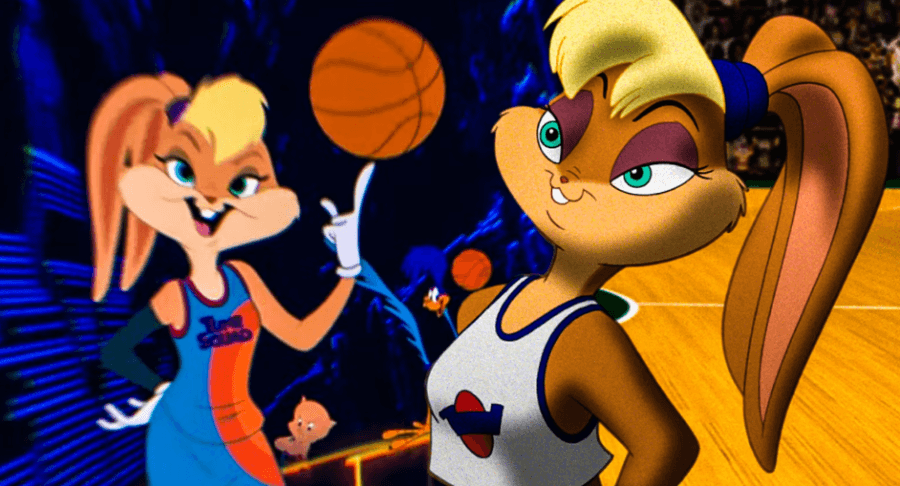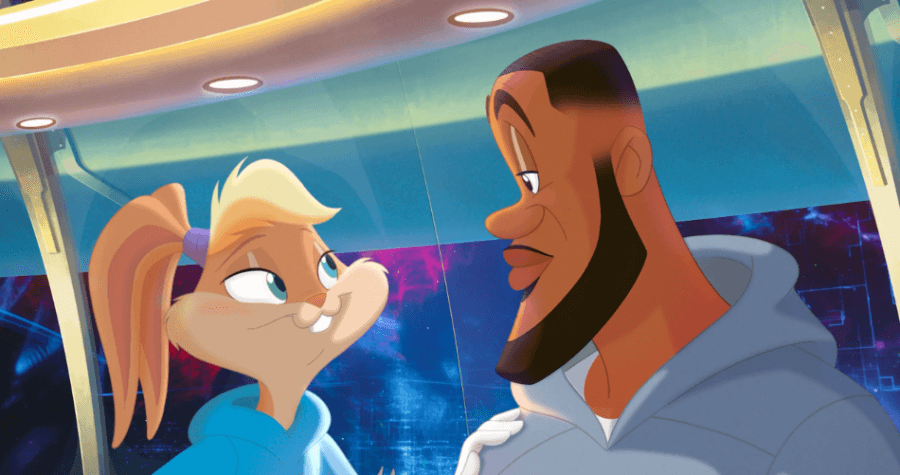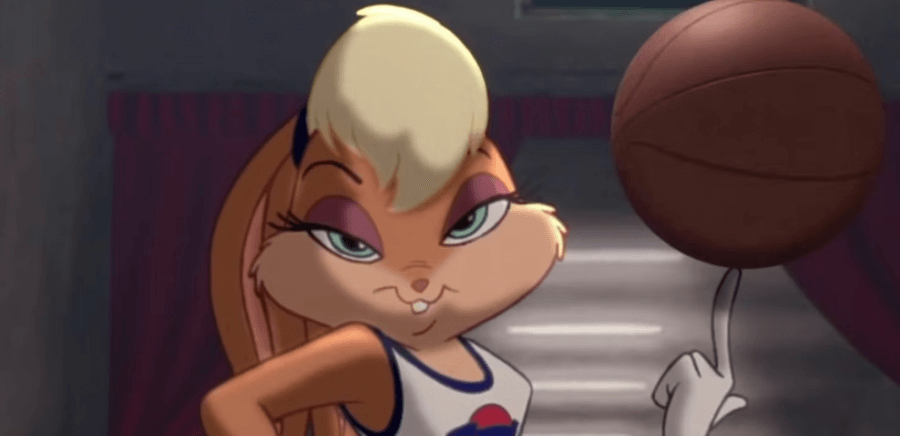📑Table of Contents:
Lola Bunny, an iconic character from the Looney Tunes universe, has captured hearts since her debut in “Space Jam” in 1996. Over the years, she has evolved, reflecting changes in animation and cultural attitudes. This blog post explores Lola Bunny’s journey, examining her character development, cultural impact, and role in the Looney Tunes franchise and popular culture.

The Debut of Lola Bunny
Lola Bunny first appeared in the 1996 film “Space Jam,” starring alongside Michael Jordan and the beloved Looney Tunes characters.
- Character Introduction: Lola is introduced as a skilled basketball player with a confident and sassy personality. She stood out with her athletic abilities and independence.
- Design and Appeal: Designed to be attractive and appealing, Lola quickly became a fan favorite. Her sleek design and strong personality differentiated her from other female characters in the Looney Tunes universe.
- Role in Space Jam: In “Space Jam,” Lola played a crucial role in helping the Tune Squad win against the Monstars. Her character demonstrated strength, agility, and teamwork.
Lola Bunny’s debut was a significant moment in animation, adding a new dynamic to the Looney Tunes cast.
Character Development Over the Years
Since her debut, Lola Bunny has undergone several changes in design and personality, reflecting evolving trends in animation and societal expectations.
- The Looney Tunes Show (2011-2014): Lola was reimagined with a more quirky and comedic personality in this series. Her design was slightly altered to fit the show’s style, and she became known for her eccentric and unpredictable behavior.
- New Looney Tunes (2015-2020): Lola’s character in this series balanced her original athleticism with the comedic elements introduced in “The Looney Tunes Show.” She was depicted as adventurous and multi-talented.
- Space Jam: A New Legacy (2021): In the sequel to the original “Space Jam,” Lola was given a more modern and less sexualized design. Her character focused on strength, intelligence, and independence, aligning with contemporary values.
These changes reflect the character’s adaptability and the creators’ efforts to keep her relevant and appealing.
Cultural Impact of Lola Bunny

Lola Bunny has significantly impacted pop culture, becoming an icon in her own right.
- Lola’s transformation into a strong and independent character led her to be praised as a feminist icon rather than being criticized for being overly sexualized. She represents empowerment and the breaking of traditional female stereotypes in animation.
- Lola has garnered a dedicated fan base over the years. Her fans appreciate her athleticism, confidence, and evolving personality.
- Merchandisers and the media have used Lola Bunny’s image for various merchandise, from toys to clothing, solidifying her place in popular culture. She also appears in video games, comic books, and other media, expanding her reach.
Lola Bunny’s cultural impact highlights her significance beyond just a cartoon character.
Revitalization and Modern Interpretations
Lola Bunny’s Portrayal in Recent Adaptations and Reboots
In recent years, Lola Bunny has undergone significant updates in her portrayal across various adaptations and reboots:
- Character Redesign: Lola Bunny’s appearance now reflects a realistic, athletic physique, departing from earlier exaggerated features.
- Personality and Role: Her character has been developed beyond being just a love interest, showcasing leadership qualities, intelligence, and athleticism.
Updates to Her Character to Reflect Contemporary Values and Audience Expectations
- Empowerment: Lola Bunny is portrayed as a strong, independent character who can hold her own alongside her male counterparts.
- Gender Representation: The focus is on portraying Lola Bunny as a role model for young viewers, promoting gender equality and empowerment.
- Inclusivity and Diversity: Adaptations aim to incorporate diverse perspectives and modern sensibilities, ensuring Lola Bunny’s portrayal resonates with a broad audience.
Criticism and Controversy
Despite her popularity, Lola Bunny’s character has faced criticism and controversy, particularly regarding her design and portrayal.
- Sexualization: Lola’s original design in “Space Jam” was criticized for being too sexualized, especially for a character in a children’s movie. This sparked discussions about the portrayal of female characters in animation.
- Character Redesign: The “Space Jam: A New Legacy” redesign addressed criticisms by making Lola Bunny’s appearance practical and less objectified. While many praised this change, some fans missed the original design.
- Role in Stories: Some critics argue that Lola’s role in various Looney Tunes iterations lacks consistency, with her personality and importance fluctuating significantly between series.
These discussions reflect broader conversations about gender representation and the evolution of female characters in media.
Future of Lola Bunny
As animation continues to evolve, so does Lola Bunny’s character. Her future looks promising, with potential for further development and new adventures.
- Continued Evolution: Lola’s character will likely continue to evolve, reflecting changes in societal attitudes and animation trends. Future portrayals may focus even more on her intelligence, independence, and strength.
- New Media: Lola will likely appear in new Looney Tunes projects, including movies, series, and possibly new media forms like virtual reality experiences.
- Cultural Relevance: As discussions about representation in media continue, Lola Bunny’s character will remain relevant, serving as a case study for portraying female characters in animation.
The future of Lola Bunny promises to be as dynamic and impactful as her past.
Comparison with Other Female Characters
Comparing Lola Bunny with Other Iconic Female Characters in Animation
Lola Bunny stands out among iconic female characters in animation due to several unique attributes and contributions to the genre:
- Athleticism and Skills: Unlike traditional female characters, Lola Bunny is often portrayed as highly athletic, showcasing prowess in sports and physical activities.
- Character Development: Over time, Lola has evolved from a secondary character to a leading role in narratives, contributing to storylines beyond romantic subplots.
- Representation of Strength: She embodies strength and determination, challenging stereotypes and empowering audiences with her confident demeanor.
Analysis of Her Unique Attributes and Contributions to the Genre
- Cultural Impact: Lola Bunny has influenced perceptions of female characters in animation by emphasizing intelligence, independence, and leadership qualities.
- Gender Equality: Her portrayal promotes gender equality by presenting a female character capable of rivaling male counterparts in skill and importance to the plot.
- Legacy: Lola Bunny’s legacy extends beyond her initial appearance, inspiring future generations of animators to create multidimensional female characters.

Final Thoughts
Lola Bunny’s journey from her debut in “Space Jam” to her modern reimagining showcases her character’s evolution and impact on pop culture. Her development reflects broader changes in animation and societal values, highlighting the importance of strong, independent female characters. As Lola Bunny continues to evolve, she remains a beloved and iconic figure in the Looney Tunes universe and beyond.
Lola Bunny’s story is a testament to the power of character evolution in media. Her ability to adapt and remain relevant demonstrates the importance of thoughtful character development.
As fans continue to celebrate her, Lola Bunny stands as a symbol of empowerment. It also has the enduring appeal of well-crafted animated characters. Dive into her world and discover why Lola Bunny continues to capture the hearts of audiences around the globe.





